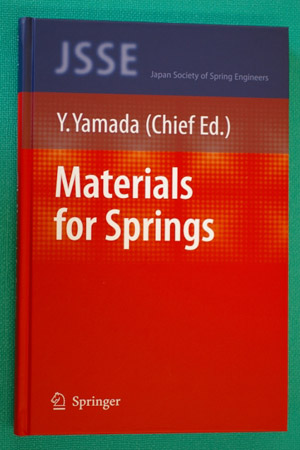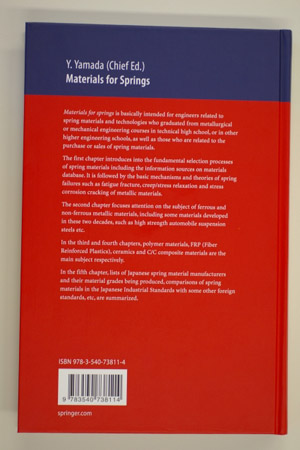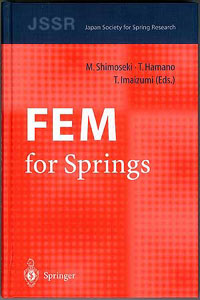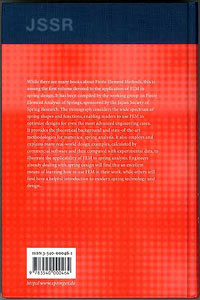Publications
FEM for Spring
[ Contents ]
- 1.SPRINGS AND ELASTIC COMPONENT
- 2.OUTLINE OF FINITE ELEMENT METHOD (FEM)
- 3.ROLE OF FEM IN SPRING ANALYSIS
- 4.CLASSIFICATION AND APPLICATION OF ELEMENT
- 5.ELEMENTARY ANALYSIS
- 6.EXPANSION OF ANALYTICAL HANDLING
While there are many books about Finite Element Methods, this is among the first volume
devoted to the application of FEM in spring design. It has been compiled by the working
group on Finite Element Analysis of Springs, sponsored by the Japan Society of Spring
Research. The monograph considers the wide spectrum of spring shapes and functions,
enabling readers to use FEM to optimize designs for even the most advanced engineering
cases. It provides the theoretical background and state-of-the-art methodologies for
numerical spring analysis. It also employs and explains many real -world design examples,
calculated by commercial software and then compared with experimental data, to
illustrate the applicability of FEM to spring analysis. Engineers already dealing with spring
design will find this an excellent means of learning how to use FEM in their work, while
others will find here a helpful introduction to modern spring technology and design.
Materials for Springs
"Materials for springs" is basically intended for engineers related
to spring materials and technologies who graduated from metallurgical
or mechanical engineering courses in technical high school, or in other
higher engineering schools, as well as those who are related to the purchase
or sales of spring materials.
The first chapter introduces into the fundamental selection processes of
spring materials including the information sources on materials database. It
is followed by the basic mechanisms and theories of spring failures such as
fatigue fracture, creep/stress relaxation and stress corrosion cracking of metallic materials.
The focuses of the second chapter is put on ferrous and non-ferrous metallic materials,
including some materials developed in these two decades, such as high strength automobile
suspension steels etc.
In the third and fourth chapters, polymer materials, FRP (Fiber Reinforced Plastics),
ceramics and C/C composite materials are the main subject respectively.
In the fifth chapter, lists of Japanese spring material manufacturers and
their material grades being produced, comparisons of spring materials in the
Japanese Industrial Standards with some other foreign standards, etc, are summarized.
Written for:
Scientists, practitioners, and students in mechanical engineering and materials research
 |
 |
|
|




